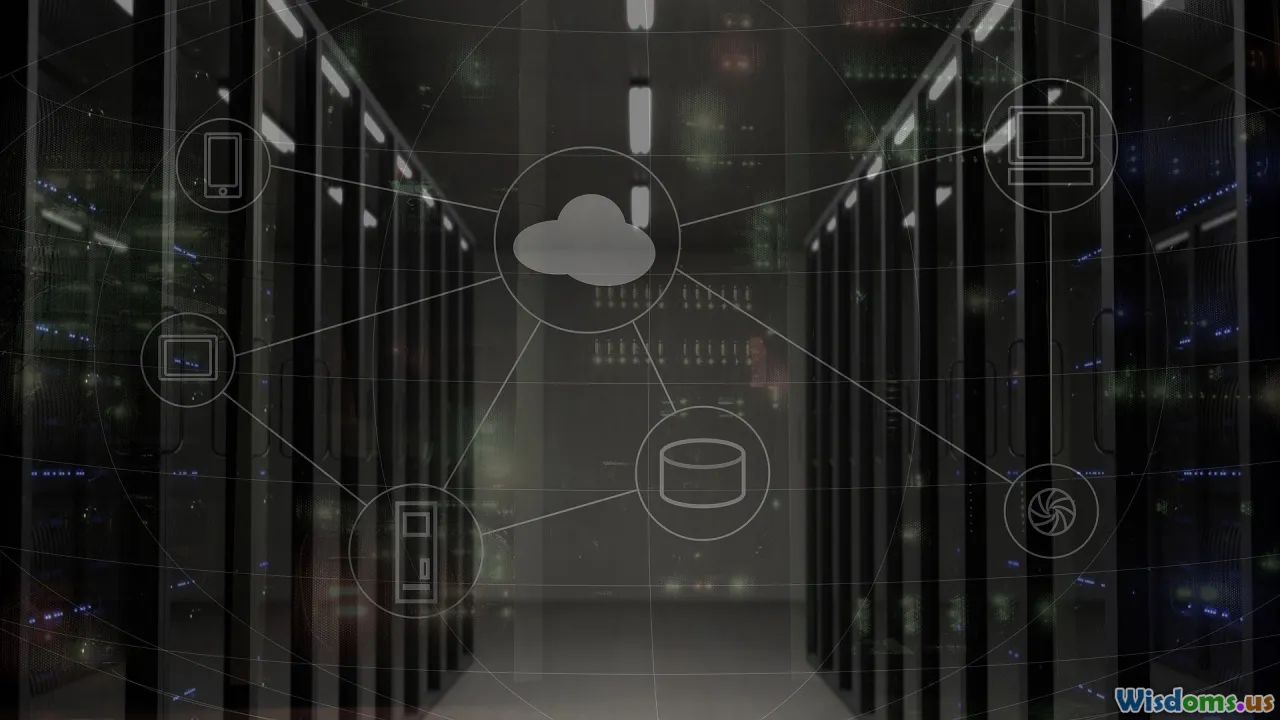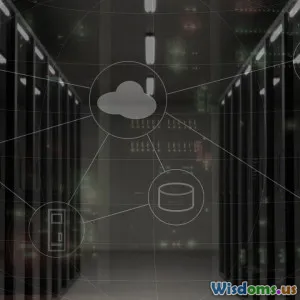
Step By Step Guide To Migrating To Cloud ERP
18 min read A practical, stepwise roadmap for businesses planning a seamless migration to cloud ERP platforms. (0 Reviews)
Step By Step Guide To Migrating To Cloud ERP
The decision to migrate to a cloud-based ERP (Enterprise Resource Planning) system is not just a technological upgrade—it’s a strategic move that can redefine the agility and scalability of a business. Organizations making this transition stand to gain flexibility, cost efficiency, and access to real-time data insights, all while setting the foundation for future growth. But as with all significant transformations, success depends on having a clear, well-planned path.
This comprehensive step-by-step guide demystifies migrating to a cloud ERP, ensuring your journey from legacy systems is smooth, secure, and strategically sound.
Assessing Your Current Landscape

Before embarking on any migration, it’s essential to develop a 360-degree understanding of your existing technology stack and business processes. This preliminary assessment serves as both a foundation and a checkpoint.
Why Assessment Matters
Without a detailed landscape analysis, migration can trigger unexpected interruptions—from data incompatibilities to workflow disruptions. For example, a manufacturing firm migrating from an on-premise SAP system to Oracle Cloud ERP discovered that some custom inventory modules had no direct equivalent in the cloud version. Forethought here could have saved months of custom development after migration.
Practical Steps:
- Inventory Software & Hardware: Document all existing ERP modules, customizations, and integrations. List related applications—CRM, HRM, BI tools—that interact with your ERP.
- Map Out Dependencies: Identify workflows, data exchanges (like EDI), and touchpoints. Use process mapping software for visual clarity.
- Evaluate Pain Points: Interview users to pinpoint inefficiencies and wishlist items. Common issues include rigid reporting or slow month-end closes.
- Review Compliance Needs: Consider data residency, encryption, and other regulatory issues—vital for healthcare, finance, or public sector organizations.
Pro Tip: Engage both IT and business users. Often, daily user insights reveal bottlenecks that are invisible at the infrastructure level.
Building a Migration Business Case

A robust business case is the linchpin of executive buy-in and project prioritization. Building it means outlining costs, anticipated benefits, risks, and strategic alignment.
Aligning Cloud ERP Benefits with Business Goals
Focus on advantages such as remote access, enhanced security, automatic updates, and scalability. For instance, a UK-based retailer shortened order-to-cash cycles by 30% after transitioning to Microsoft Dynamics 365 Finance and Operations, primarily due to process automation.
Cost & ROI Analysis
Budgeting must account for the following:
- Licensing Fees: Cloud ERP typically uses a subscription model; include user tiers and add-ons.
- Implementation & Training: Factor in cost for data migration, custom coding, and user learning curves.
- Ongoing Support: Managed services, periodic tune-ups, and cybersecurity.
- Decommissioning Legacy Systems: Both planned and surprise costs.
Example Template:
| Cost Category | Estimated Amount ($) | Notes |
|---|---|---|
| ERP Subscription | 80,000/year | For 150 users |
| Implementation Services | 100,000 | Vendor + internal |
| Staff Training | 25,000 | Group sessions |
| Data Migration | 30,000 | Data cleaning, mapping, etc. |
| Contingency | 15,000 | Buffer for scope changes |
Presenting Value
Construct a narrative using KPIs: reduction in business process cycle time, projected savings in IT maintenance, or improved audit readiness. Quantifying these values bolsters the case and justifies investment.
Selecting the Right Cloud ERP Platform

ERP software is foundational; thus, selecting the right provider shapes all other project stages. Criteria should go beyond cost, focusing on fit, flexibility, and support ecosystem.
Major Contenders Compared
- SAP S/4HANA Cloud: Excellent for global enterprises with complex needs; robust industry templates but higher TCO.
- Oracle Cloud ERP: Deep financial controls and analytics, especially suited for fast-growing or multinational companies.
- Microsoft Dynamics 365: Strong ERP-CRM integration, seamless Azure compatibility.
- NetSuite: Popular among mid-sized and fast-scaling organizations with its modular, cloud-native approach.
Comparison Snapshot
| Feature | SAP S/4HANA | Oracle Cloud | Dynamics 365 | NetSuite |
|---|---|---|---|---|
| Deployment Options | Public/Private | Public | Public | Public |
| Best For | Complex, global | Finance centric | Integrated CRM | Medium businesses |
| Customization | High | High | Moderate | Moderate |
| App Marketplace | Yes | Yes | Yes | Limited |
| Third-Party Connect | Extensive | Extensive | Extensive | Moderate |
Tips for Evaluation
- Request demos using your own data.
- Query user communities on actual day-to-day agility and support.
- Weigh the partner ecosystem for long-term enhancements.
Crafting a Migration Project Plan

A cloud ERP migration project touches every business function. Success requires formal planning—defining milestones, stakeholders, and governance.
Essential Elements of the Project Plan
- Steering Committee: Assemble cross-functional leaders from IT, finance, HR, and operations. Include a project sponsor at the executive level.
- Scope Definition: What’s in or out for phase one? For example, will you migrate only core finance, or all satellite modules?
- Timeline Benchmarks: Establish phases—discovery, configuration, data migration, UAT, and go-live. Use Gantt charts or Kanban boards.
- Risk Management: List potential risks—data loss, downtime, regulatory missteps—and mitigations, like parallel runs and rollback procedures.
- Change Management: Communication cadence, training plans, Q&A sessions, and feedback loops.
Real-World Example
An American electronics distributor staggered rollouts by business units, starting with accounting before moving to sales ops. This minimized user confusion and allowed learnings to be incorporated at each stage.
Data Migration and Cleansing

Data is the backbone of your ERP. Clean, accurate data ensures a seamless transition, while dirty data can jeopardize business continuity.
Steps for Successful Data Migration
- Data Audit: Identify all data sources—current ERP, spreadsheets, edge systems. Classify data for migration.
- Cleanup: Remove duplicates, correct errors, and fill in missing info. For example, standardizing customer IDs prevents future reporting mismatches.
- Data Mapping: Align old fields with new cloud ERP fields. Document transformations (e.g., splitting a single address into multiple regions).
- Test Imports: Run small-batch mock migrations. Validate that POs, journal entries, and contacts flow and reconcile as expected.
- Secure Data Handling: Use encrypted transfers and comply with GDPR, HIPAA, or relevant laws.
Success Story: A mid-sized pharma company leveraged automated cleansing tools to verify and normalize master data, reducing input errors by 80% once live.
Integration with Third-Party Systems

Modern businesses rely on myriad apps for payroll, e-commerce, shipping, and analytics. Integrating these with a new cloud ERP avoids data silos and manual reentry.
Assessing Integration Needs
List all third-party systems and the essential data flows—such as order info passed from Shopify to the ERP, or payroll data from ADP to HR modules.
Approaches to Integration
- Native Connectors: Many leading ERPs come with out-of-the-box connectors for leading apps like Salesforce, Shopify, or ADP.
- APIs: RESTful APIs enable custom integration; ensure documentation is robust.
- iPaaS Tools: Integration-platform-as-a-service (e.g., Mulesoft, Boomi) allows seamless flow between cloud and on-premise apps.
Tip: Prioritize integrations by business impact. Start with customer-facing and financial data anchor points.
User Training and Change Management

Transitioning to a new cloud ERP inevitably changes daily workflows. Effective user training eases anxiety, accelerates adoption, and boosts ROI.
Building a Training Plan
- Segment Users: Different roles require tailored focus—finance, supply chain, sales, management.
- Choose Training Modes: Mix live workshops, on-demand videos, and knowledge-base articles. Interactive microsimulations work well for process-heavy modules.
- Superuser Program: Identify champions who can assist peers and liaise with the IT team post go-live.
- Feedback Channels: Use surveys or forums for ongoing questions and continuous improvement.
In a real-life scenario, a Swedish retailer supplemented e-learning with twice-weekly Q&A drop-ins, increasing post-migration satisfaction scores by over 40%.
Testing and Quality Assurance

Thorough testing is your safety net. Errors at this stage prevent major business disruptions after go-live.
Key Phases
- Unit Testing: IT checks individual modules (e.g., invoice creation, payment runs).
- Integration Testing: Verifies flows across modules and with third-party tools. For example, does a sale trigger inventory updates in real time?
- User Acceptance Testing (UAT): End-users run real-world scenarios. Document approval is usually required before green-lighting go-live.
- Performance Testing: Simulate end-of-quarter or flash-sale peaks.
- Disaster Recovery: Run a rollback drill to ensure business continuity.
Quality Assurance Tip: Utilize test automation for repeatable processes. Many organizations have sped up regression tests by 60% using dedicated QA frameworks.
The Go-Live Launch and Immediate Aftermath

After months of preparation, going live is the most visible milestone but comes with its own risks and requirements.
Preparing for Launch
- Establish a Command Center: A dedicated support squad handles issues in real time—ideally staffed with vendor reps, internal experts, and project managers.
- Schedule Wisely: Time your go-live during off-peak periods (weekends or holiday lulls) to minimize operational impact.
- Communicate Organization-Wide: Transparently flag what’s changing, timelines for system cutovers, and contingency contacts.
Handling Post-Go-Live Hiccups
Immediate support must address:
- Unprocessed transactions
- User login/authentication issues
- Missing reports or access rights
For example, a Canadian logistics company kept its legacy system in parallel run mode for two weeks, providing a fallback if unforeseen issues arose.
Post-Migration Optimization and Continuous Improvement

Going live is the beginning, not the end. The most successful cloud ERP projects invest in continuous monitoring and adaptation.
Key Practices
- Performance Dashboards: Use built-in analytics to monitor system load, user adoption, and process bottlenecks.
- Regular Enhancements: Collect user feedback for successive wave releases and improvements—new workflows, reports, or automations.
- ERP Health Checks: Schedule periodic reviews with your vendor or managed services partner to optimize system configurations and security posture.
- Staying Current: Cloud ERPs offer quarterly release cycles; plan testing and rollouts for new features in advance.
A US-based auto parts distributor discovered reporting delays post-migration. Root cause analysis led to customized data warehouse enhancements, boosting analytics speed by 50%.
The move to cloud ERP is a significant yet entirely manageable endeavor when divided into clear, actionable steps. Organizations willing to plan thoroughly—backed by strong partnership between IT and business teams—are poised not just for a successful migration, but measurable competitive advantage, greater agility, and the foundation for future innovation.
Rate the Post
User Reviews
Other posts in Cloud Computing
Popular Posts















